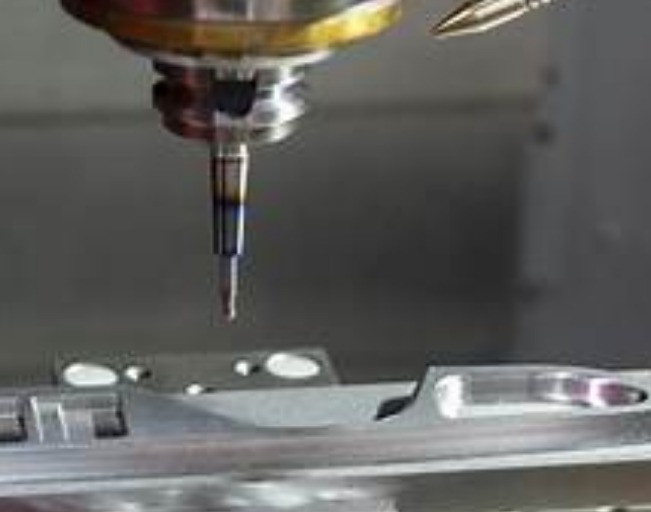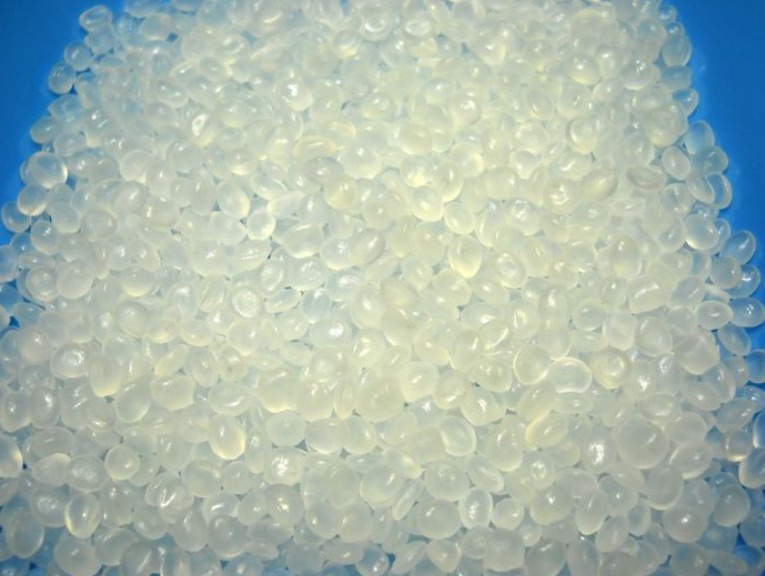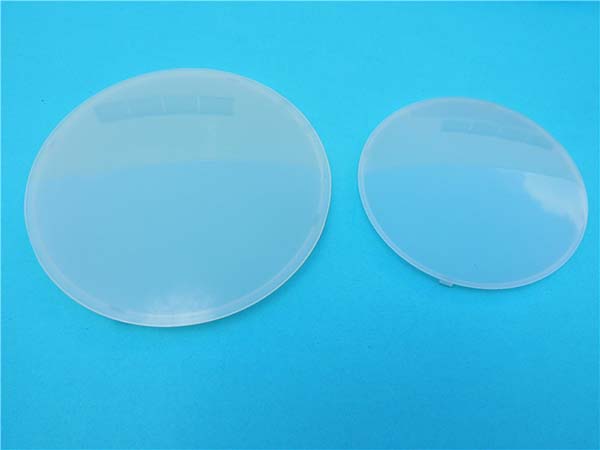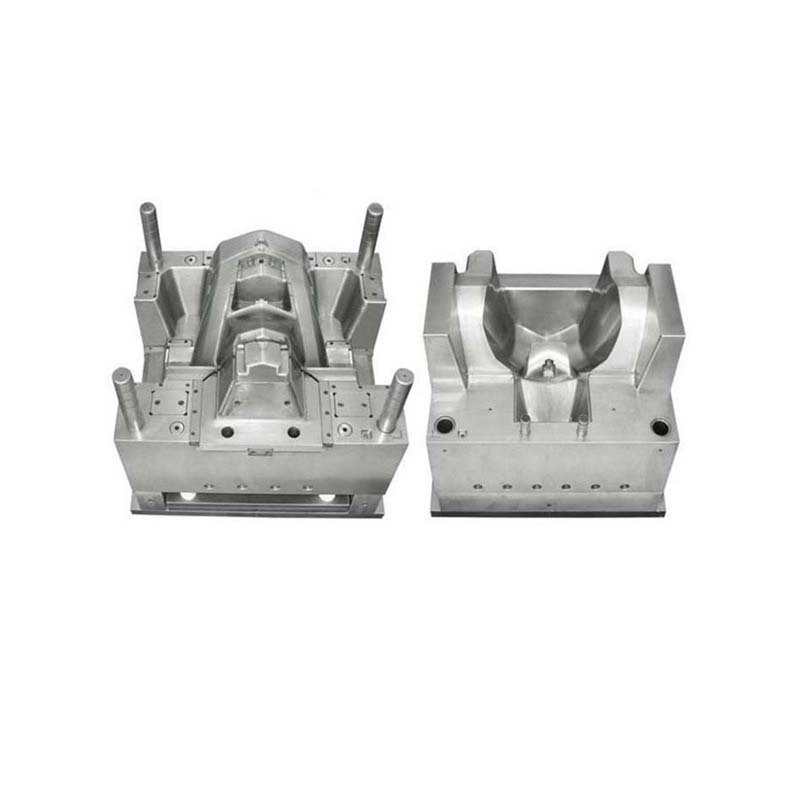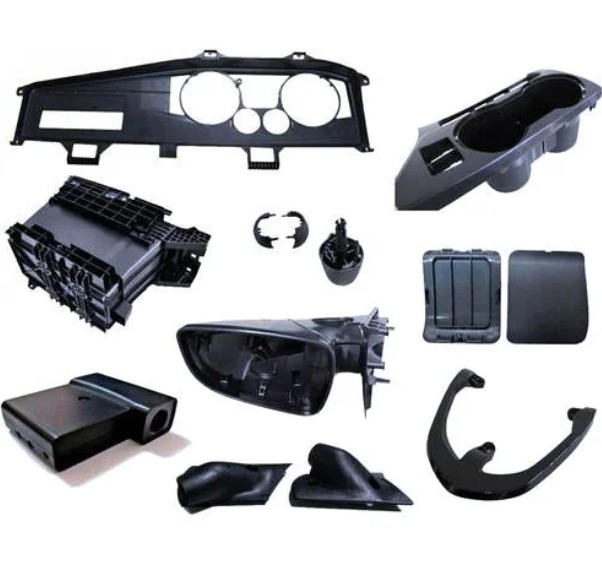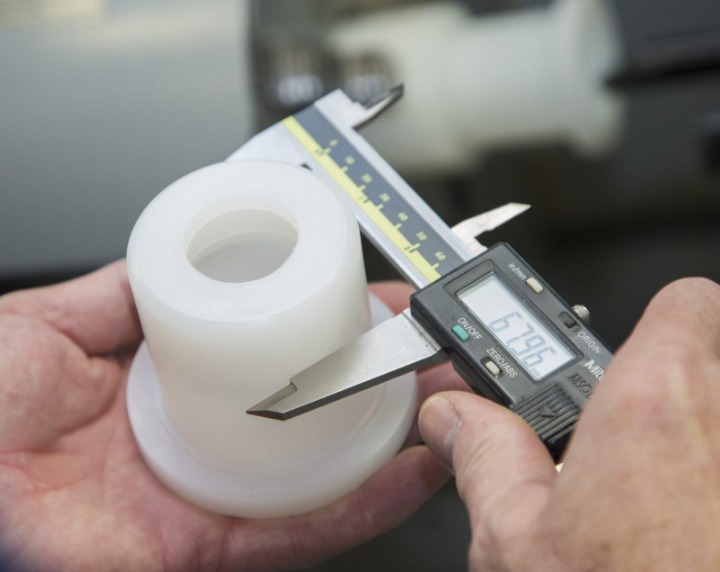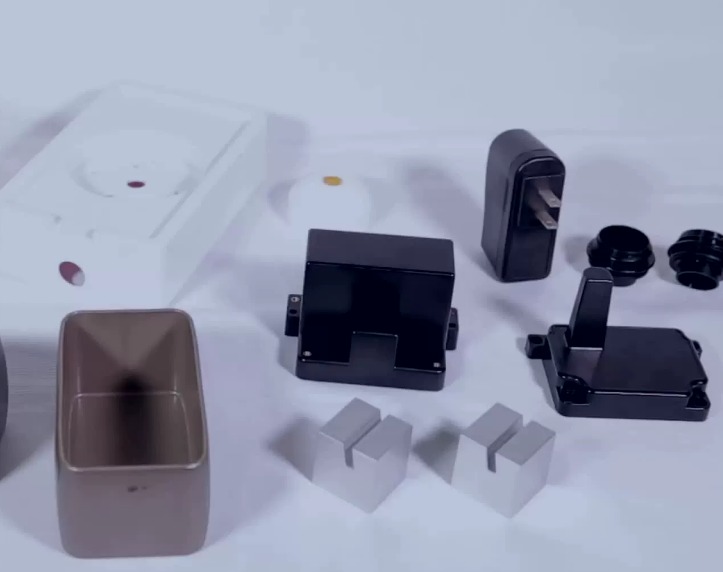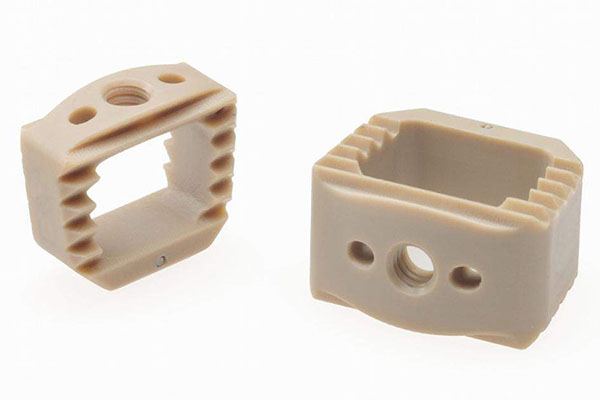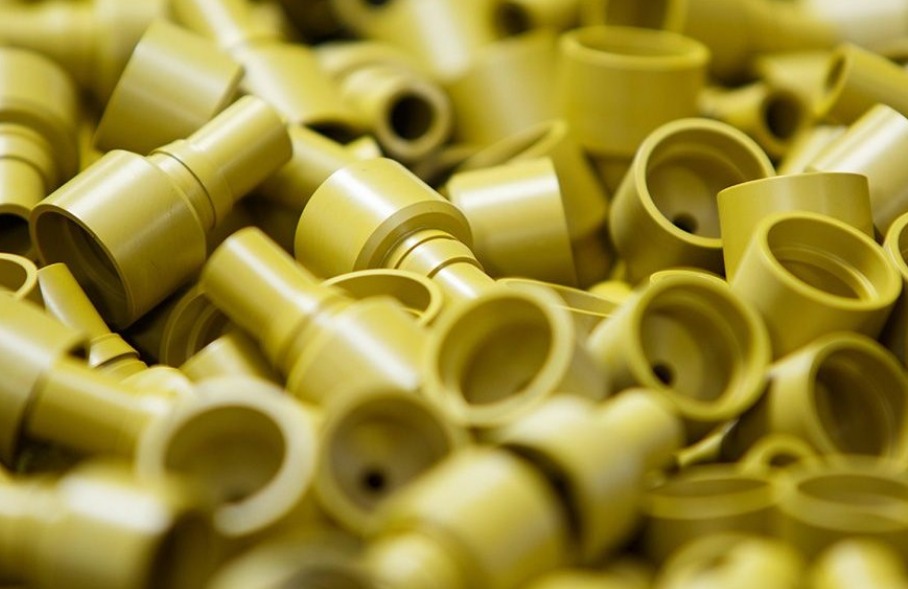Introduction
In the vast realm of plastic manufacturing, injection moulding machines stand as the cornerstone, playing a pivotal role in transforming raw plastic materials into a diverse array of products that permeate every aspect of our lives. From the tiny components within our electronic devices to the large - scale parts used in automotive manufacturing, injection moulding technology has become indispensable.
The efficiency and quality of the injection moulding process are highly dependent on the components that make up these machines. Each component, whether it's a small but crucial screw or a large, complex hydraulic system, has its unique function and contributes to the overall performance of the injection moulding machine. Understanding these components is not only essential for those directly involved in the plastic manufacturing industry, such as engineers, technicians, and machine operators but also for business owners looking to optimize production, reduce costs, and enhance product quality.
This comprehensive guide will delve deep into the world of injection moulding machine components. We will explore their functions, types, and how they interact with each other during the injection moulding process. By the end of this article, you'll have a thorough understanding of injection moulding machine components, enabling you to make more informed decisions regarding machine maintenance, upgrades, and new purchases.
What are Injection Moulding Machine Components
Injection moulding is a widely used manufacturing process for producing plastic parts in high volume. At the heart of this process are injection moulding machine components, which work together to transform raw plastic materials into precise and high - quality products. These components are the building blocks that enable the injection moulding process to occur efficiently and accurately.
The injection moulding machine components can be divided into several major systems, each with its own crucial functions. These include the injection unit, the clamping unit, the hydraulic system, the electrical control system, and various auxiliary components. Each of these systems contains multiple individual components, all of which are essential for the proper functioning of the injection moulding machine.
Key Components of Injection Moulding Machines
Injection Unit
The injection unit is the heart of an injection moulding machine, responsible for melting the plastic material and injecting it into the mould cavity. It consists of several key components:
- Screw: The screw plays a vital role in the plasticizing process. As it rotates within the barrel, it conveys the plastic pellets forward, compresses them, and shears the material, generating heat through friction. This heat, combined with the heat from the barrel heaters, melts the plastic. Screws come in different lengths, diameters, and compression ratios. For example, a screw with a higher compression ratio is better suited for processing high - viscosity plastics as it can provide more efficient melting and homogenization.
- Barrel: The barrel houses the screw and is equipped with heating elements. These heaters maintain the plastic at the appropriate temperature for melting and injection. The inner surface of the barrel must be smooth and wear - resistant to ensure the smooth movement of the screw and prevent material adhesion.
- Nozzle: The nozzle is the final point through which the molten plastic exits the injection unit and enters the mould. It has a small orifice that controls the flow rate of the plastic and can be designed to have different tip shapes, such as open - ended or needle - valve types. The needle - valve nozzle is often used for precision moulding as it can prevent drooling of the molten plastic when the injection is paused.
The following table shows the parameters and applicable plastic types of different - sized screws:
| Screw Diameter (mm) | Compression Ratio | L/D Ratio (Length to Diameter) | Applicable Plastic Types |
| 25 | 2.5 - 3.0 | 20 - 25 | Low - viscosity plastics like polyethylene (PE) with small - sized products |
| 40 | 3.0 - 3.5 | 22 - 28 | Medium - viscosity plastics such as polypropylene (PP) for medium - sized parts |
| 60 | 3.5 - 4.0 | 25 - 30 | High - viscosity plastics like polycarbonate (PC) for large - sized components |
Clamping Unit
The clamping unit is essential for the proper functioning of the injection moulding process. Its primary functions are to open and close the mould and to provide the necessary clamping force to hold the mould closed during injection and cooling.
- Templates: The templates, including the fixed and movable templates, provide a mounting surface for the mould. They must be rigid enough to withstand the high clamping forces without significant deformation. The size of the templates determines the maximum size of the mould that can be installed on the machine.
- Tie Rods: Tie rods connect the fixed and movable templates and guide the movement of the movable template during mould opening and closing. They are typically made of high - strength steel and are designed to withstand the tensile forces generated by the clamping action.
- Clamping Cylinders: These hydraulic or mechanical cylinders are responsible for generating the clamping force. In hydraulic systems, high - pressure oil is used to drive the piston in the cylinder, which in turn moves the movable template to close the mould. The clamping force required depends on several factors, such as the size of the mould cavity, the thickness of the plastic part, and the type of plastic material being processed. As a general rule, for a larger - sized mould with a greater projected area, a higher clamping force is needed. For example, when moulding a large - scale automotive plastic part with a projected area of 1 square meter using a high - viscosity engineering plastic like acrylonitrile - butadiene - styrene (ABS), a clamping force of around 1000 - 1500 tons might be required.
Ejection Unit
The ejection unit is responsible for removing the finished plastic product from the mould after the cooling cycle is complete.
- Ejector Pins: These are slender rods that are positioned within the mould cavity. When the ejection process is activated, the ejector pins move forward to push the plastic part out of the mould. Ejector pins come in various diameters and lengths, and their placement within the mould is carefully designed to ensure uniform ejection without damaging the plastic part.
- Ejection Plate: The ejection plate is connected to the ejector pins. When the machine's ejection mechanism is actuated, the ejection plate moves, transmitting the force to the ejector pins.
Ejection Cylinder: The ejection cylinder provides the power source for the ejection process. Similar to the clamping cylinders, it can be hydraulic or mechanical. In a hydraulic ejection system, the cylinder uses pressurized fluid to drive the movement of the ejection plate, ensuring a smooth and controlled ejection of the plastic part. The choice of ejection cylinder depends on factors such as the size and weight of the plastic product, as well as the required ejection force and speed. For larger and heavier parts, a more powerful ejection cylinder with a higher force - generating capacity is needed to ensure that the part can be successfully removed from the mould without causing any damage.
Importance of High - Quality Components
Performance and Efficiency
High - quality components are the cornerstone of a high - performing injection moulding machine. Take the screw as an example. A high - quality screw with an optimized design and made from advanced materials can significantly improve the plasticizing efficiency. Research has shown that a top - of - the - line screw can reduce the plasticizing time by up to 20% compared to a low - quality one. For instance, in a production facility that processes 1000 kg of plastic per day, a high - quality screw can save about 2 - 3 hours of production time daily. This is because it can convey, compress, and shear the plastic pellets more effectively, generating heat more efficiently and ensuring a more uniform melting of the plastic material.
The clamping unit also plays a crucial role in performance and efficiency. High - quality clamping cylinders with precise control systems can achieve faster response times when closing and opening the mould. In a high - volume production scenario, where the mould needs to be opened and closed thousands of times a day, a well - designed clamping unit can reduce the overall cycle time by a few seconds per cycle. Over the course of a day, these few seconds saved per cycle can add up to a significant amount of extra production capacity. For example, if a standard injection moulding cycle takes 30 seconds and a high - quality clamping unit can reduce it by 3 seconds, in a day of 1000 cycles, the production time saved is 3000 seconds or 50 minutes, which can be used to produce more products.
Product Quality
The quality of components has a direct and profound impact on the quality of the final plastic products. One of the most critical aspects is temperature control. Precise temperature - control components, such as high - accuracy thermocouples and advanced temperature controllers, are essential for maintaining the correct temperature during the injection moulding process. If the temperature is not accurately controlled, it can lead to a variety of product defects.
For example, if the temperature is too low, the plastic may not flow properly into the mould cavity, resulting in short - shots (incomplete filling of the mould). On the other hand, if the temperature is too high, the plastic may over - heat, causing discolouration, degradation of material properties, and the formation of voids or bubbles in the product. A study has shown that in facilities with inaccurate temperature - control components, the product defect rate can be as high as 15 - 20%. In contrast, those using high - quality temperature - control components can keep the defect rate below 5%. The following chart clearly illustrates the relationship between component quality (specifically temperature - control components) and product defect rate:
| Component Quality Level | Product Defect Rate |
| Low - quality | 15% - 20% |
| Medium - quality | 8% - 12% |
| High - quality | Less than 5% |
Durability and Maintenance
Investing in high - quality components pays off in the long run in terms of durability and maintenance costs. High - quality components are often made from more robust materials and are designed with better engineering principles, which makes them more resistant to wear and tear. For example, high - quality tie rods in the clamping unit, made from high - strength alloy steel, can withstand higher tensile forces and are less likely to bend or break over time. This not only reduces the risk of sudden machine failures but also extends the overall lifespan of the injection moulding machine.
Common component failures, such as screw wear, barrel corrosion, and hydraulic cylinder leaks, can be significantly reduced with high - quality components. A well - made screw, for instance, can last 2 - 3 times longer than a low - quality one before it needs to be replaced. This means fewer interruptions in production for component replacements, leading to higher productivity. Additionally, high - quality components may require less frequent maintenance. For example, high - quality hydraulic seals in the clamping cylinders can maintain their integrity for a longer time, reducing the need for regular seal replacements and associated maintenance work. In a production facility, reducing maintenance frequency can save thousands of dollars in maintenance costs annually and also minimize production downtime.

Yigu Technology's Perspective
Yigu Technology, as a non - standard plastic metal products custom supplier, understands the unique value of customized components in the realm of injection moulding machines. With our professional technical expertise and rich experience, we are committed to meeting the special requirements of different customers for injection moulding machine components.
We offer a one - stop service from design to production. Our design team can collaborate closely with customers, taking into account their specific production needs, product characteristics, and budget constraints to create optimized component designs. During the production process, we utilize advanced manufacturing techniques and high - quality materials to ensure that each component meets the highest standards of quality and performance. Whether it's a unique - shaped screw, a customized clamping unit part, or a specialized ejection system component, Yigu Technology has the ability to bring your ideas to life, providing reliable solutions for enhancing the performance of your injection moulding machines.
FAQ
What are the common failure modes of injection moulding machine screws?
Common failure modes of injection moulding machine screws include wear, deformation, and fracture. Wear often occurs due to continuous friction between the screw and the barrel, as well as the shearing action on the plastic material. This can lead to a decrease in the screw's diameter and changes in its thread profile, affecting plasticizing efficiency. Deformation may result from excessive torque during operation or improper installation. For example, if the screw is not properly aligned with the barrel, uneven forces can cause it to bend. Fracture is usually caused by fatigue failure after long - term use under high - stress conditions, or by sudden impacts, such as when foreign objects enter the barrel. To address these issues, regular inspection of the screw is crucial. When wear is detected, the screw can be re - coated or replaced if the wear is severe. For deformation, realigning or replacing the screw is necessary. To prevent fractures, proper material selection, quality control during manufacturing, and avoiding abnormal operating conditions are essential.
Why is regular maintenance of injection moulding machine components necessary?
Regular maintenance of injection moulding machine components is essential for several reasons. Firstly, it helps prevent unexpected failures. Components like screws, hydraulic seals, and electrical connectors can gradually wear out over time. Regular maintenance allows for the early detection of wear and tear, enabling timely replacement or repair, which can prevent sudden breakdowns that could halt production. Secondly, it extends the lifespan of components. Proper lubrication, cleaning, and calibration during maintenance can reduce friction and stress on components, thus increasing their durability. For example, regularly changing the hydraulic oil and cleaning the filters can prevent contamination that could damage the hydraulic system. Thirdly, it ensures product quality. Well - maintained components can maintain stable operating conditions. For instance, accurate temperature - control components can ensure consistent melting and injection of the plastic material, reducing product defects.
Typical maintenance projects include daily checks of oil levels, temperatures, and machine operations; weekly inspections of bolts, nuts, and hydraulic lines for leaks; monthly checks of the electrical system for loose connections; and annual overhauls that may involve replacing worn - out parts, calibrating sensors, and servicing major components like the injection unit and clamping unit.
Conclusion
Injection moulding machines are complex devices that consist of various components, each with a specific function and role.
Injection molding machines are complex pieces of equipment used in the manufacturing industry to produce a wide range of plastic products. Understanding the various components of an injection molding machine is essential for manufacturers and operators to ensure the machine's proper functioning and optimize the injection molding process. A comprehensive guide to injection molding machine components covers the key elements that make up this sophisticated machinery.
In short, an injection molding machine consists of several basic components that work together to efficiently and accurately execute the injection molding process. Each component plays a specific role in melting and injecting plastic materials, firmly securing molds, shaping final products, and ensuring precise temperature and pressure control. Manufacturers and operators must have a comprehensive understanding of these components in order to optimize injection molding processes and produce high-quality plastic products.
